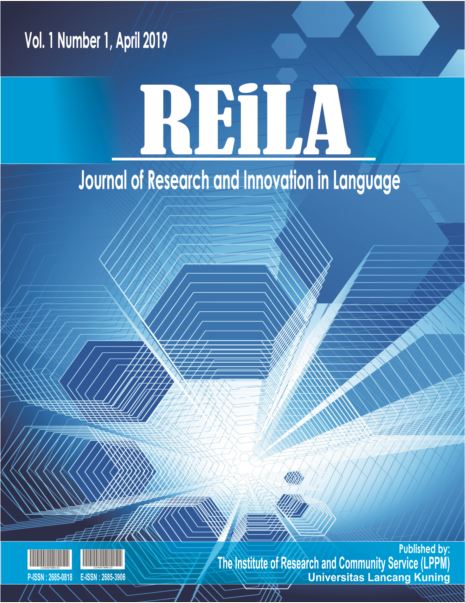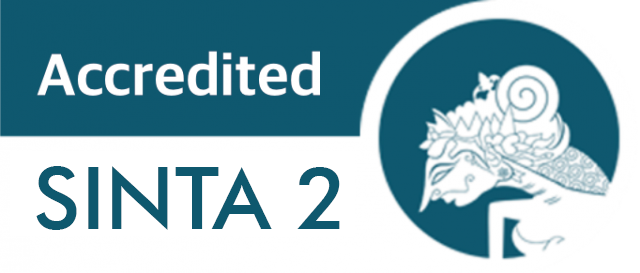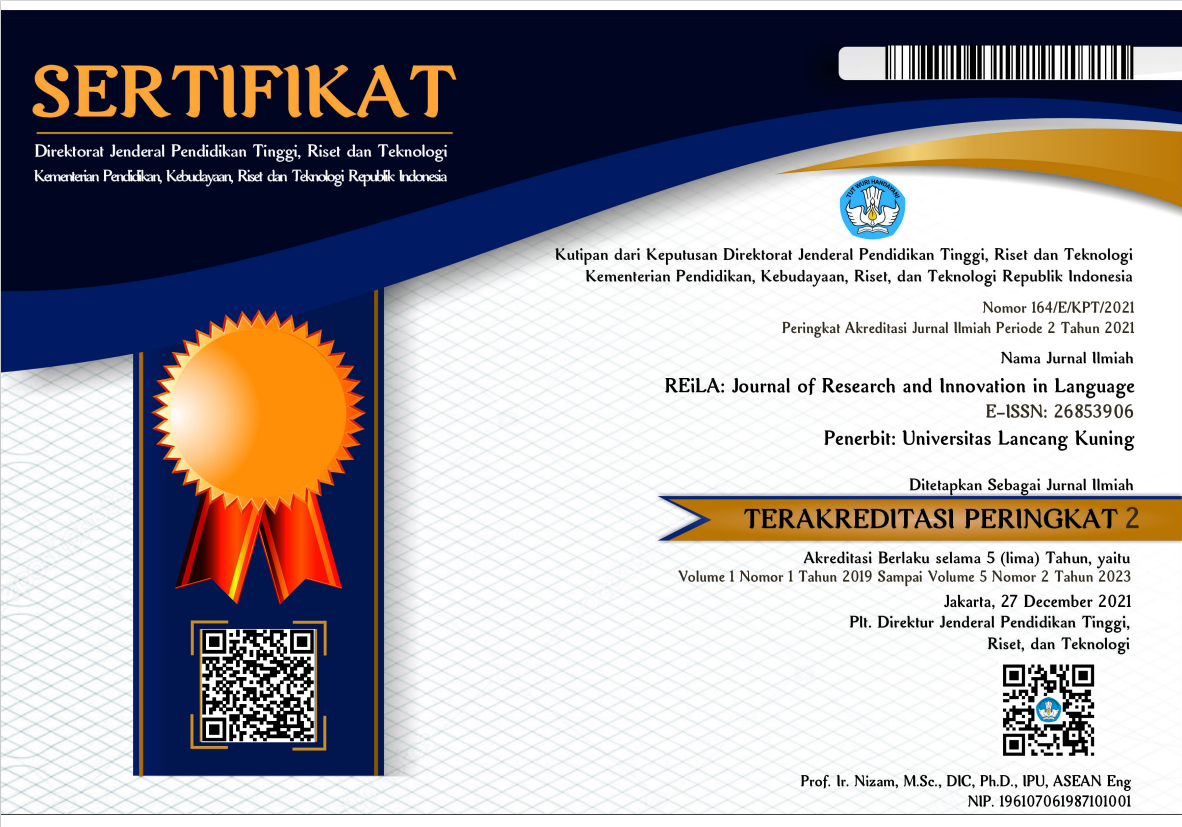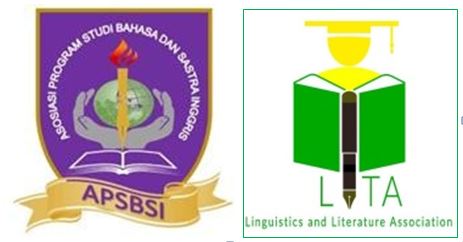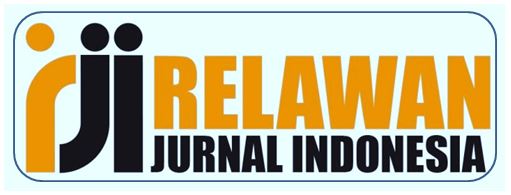Terminology-Based Indonesian Language Teaching Materials Development: ISTIQLAL High School Context
Abstract
This exploratory study aims to describe (1) the development of terminology-based Indonesian language materials for students in Deli Serdang, (2) the level of validation of terminology-based Indonesian language materials for students in Deli Serdang, (3) students' responses related to the legibility of terminology-based Indonesian language materials. The subjects of this study were content experts, Indonesian language subject teachers, and students of ISTIQLAL High School Deli Serdang. The procedure of this study adapted research procedures from Borg and Gall. The instruments used for data collection in this study were documentation, observation, questionnaires and interviews. Data analysis techniques applied in this study were qualitative and quantitative techniques. The results of this study indicate that: (1) teaching materials are designed in line with the 2013 curriculum based on terminology, (2) the level of validation of teaching materials is in good qualification, and (3) the response of users of teaching materials in the field test phase is good.
Downloads
References
Abbas, M. F. F. (2018). Solving the students’problems in writing argumentative essay through collaborative writing strategy. English review, 7(1).
Ali, A. (2010). Empowering teachers through capacity building and professional development: a collaborative effort.
Al-Qinai, J. (2007). Abbreviation and acronymy in English Arabic translation. Meta: Journal des traducteurs/Meta: Translators' Journal, 52(2), 368-375.
Ariyatna, E. (2018). Pengembangan Bahan Ajar Menulis Teks Cerita Ulang Biografi Berbasis Peta Pikiran Siswa Kelas XI SMK NEGERI 2 MEDAN (Doctoral dissertation, UNIMED).
Bahasa, P. (1989). Pedoman umum pembentukan istilah. Balai Pustaka.
Bahasa, P. (2008). Departemen Pendidikan dan Kebudayaan. Kamus Besar Bahasa Indonesia.
Borg, W. R., & Gall, M. (1989). D.(1989). Education Research: An Introduction (4th Edition). New York. Longman publisher.
Butler, C. (1995). Statistika dalam Linguistik. Bandung: Penerbit ITB.
Buus, N., & Hamilton, B. E. (2016). Social science and linguistic text analysis of nurses’ records: a systematic review and critique. Nursing inquiry, 23(1), 64-77.
Deliani, S. Pengaruh Kosakata Bahasa Jawa Dalam Surat Kabar Di Medan (Master's thesis).
Deliani, S., Sulistyawati, S., & Kurniawan, B. (2018, April). Pembentukan Karakter Melalui Literasi dari Aspek Satra dan Budaya di Desa Manik Maraja Kec Sarimatondang Kabupaten Sidamanik. In PROSIDING SEMINAR NASIONAL HASIL PENGABDIAN (Vol. 1, No. 1, pp. 356-360).
Departemen Pendidikan Nasional. (2005). Kamus Besar Bahasa Indonesia Edisi Ketiga. Jakarta.
Dewi, H. D. (2017). Language Acquisition and Translator Training. Journal of English Language and Culture, 1(2).
Furqon J. (2009). Teacher certification in Indonesia: A strategy for teacher quality improvement. Departemen Pendidikan Nasional, Republik Indonesia.
Hamdani. (2017). Strategi Belajar Mengajar. Bandung: CV. Pustaka Setia.
Hans, N. (2012). Comparative education: A study of educational factors and traditions. Routledge.
Hasibuan, A. M., Saragih, S., & Amry, Z. (2018). Development of Learning Materials Based on Realistic Mathematics Education to Improve Problem Solving Ability and Student Learning Independence. International Electronic Journal of Mathematics Education, 14(1), 243-252.
Kosasij, E. (2014). Jenis-jenis Teks dalam Mata Pelajaran Bahasa Indonesia SMA/MA/SMK. Bandung: Yrama Widya.
Kuraedah, S., Gunawan, F., Wekke, I. S., & Hamuddin, B. (2018, July). Learning Environment Construction in Islamic Higher Education: Connecting the Puzzles of Ideas. In IOP Conference Series: Earth and Environmental Science (Vol. 175, No. 1, p. 012107). IOP Publishing.
Mulyasa, E. (2006). Kurikulum Berbasis Kompetensi, Konsep, Karakter, dan Implementasi. Bandung: PT. Remaja Rosdakarya.
Nikolov, M. (Ed.). (2016). Assessing young learners of English: Global and local perspectives. Berlin: Springer.
Nurdyansyah, N. (2018). Pengembangan Bahan Ajar Modul Ilmu Pengetahuan Alambagi Siswa Kelas Iv Sekolah Dasar. Universitas Muhammadiyah Sidoarjo.
Peersman, C., Daelemans, W., Vandekerckhove, R., Vandekerckhove, B., & Van Vaerenbergh, L. (2016). The effects of age, gender and region on non-standard linguistic variation in online social networks. arXiv preprint arXiv:1601.02431.
Prastowo, A. (2012). Pengembangan Sumber Belajar. Yogyakarta: Pedagogia.
Spolsky, B. (Ed.). (2012). The Cambridge handbook of language policy (p. 46). Cambridge: Cambridge University Press.
Sudjana, N. (2005). Metode statistika. Bandung: Tarsito, 168.
Weidenmann, B. (1991). Lernen mit Bildmedien: psychologische und didaktische Grundlagen. Beltz.
Wekke, I. S., Yandra, A., & Hamuddin, B. (2017, December). Learning Strategy in Class Management: A Reflection from Manado Case. In IOP Conference Series: Earth and Environmental Science (Vol. 97, No. 1, p. 012053). IOP Publishing.
Yule, G. (2016). The study of language. Cambridge university press.

